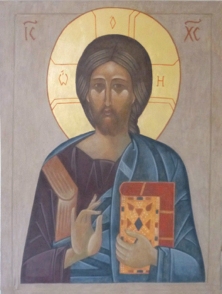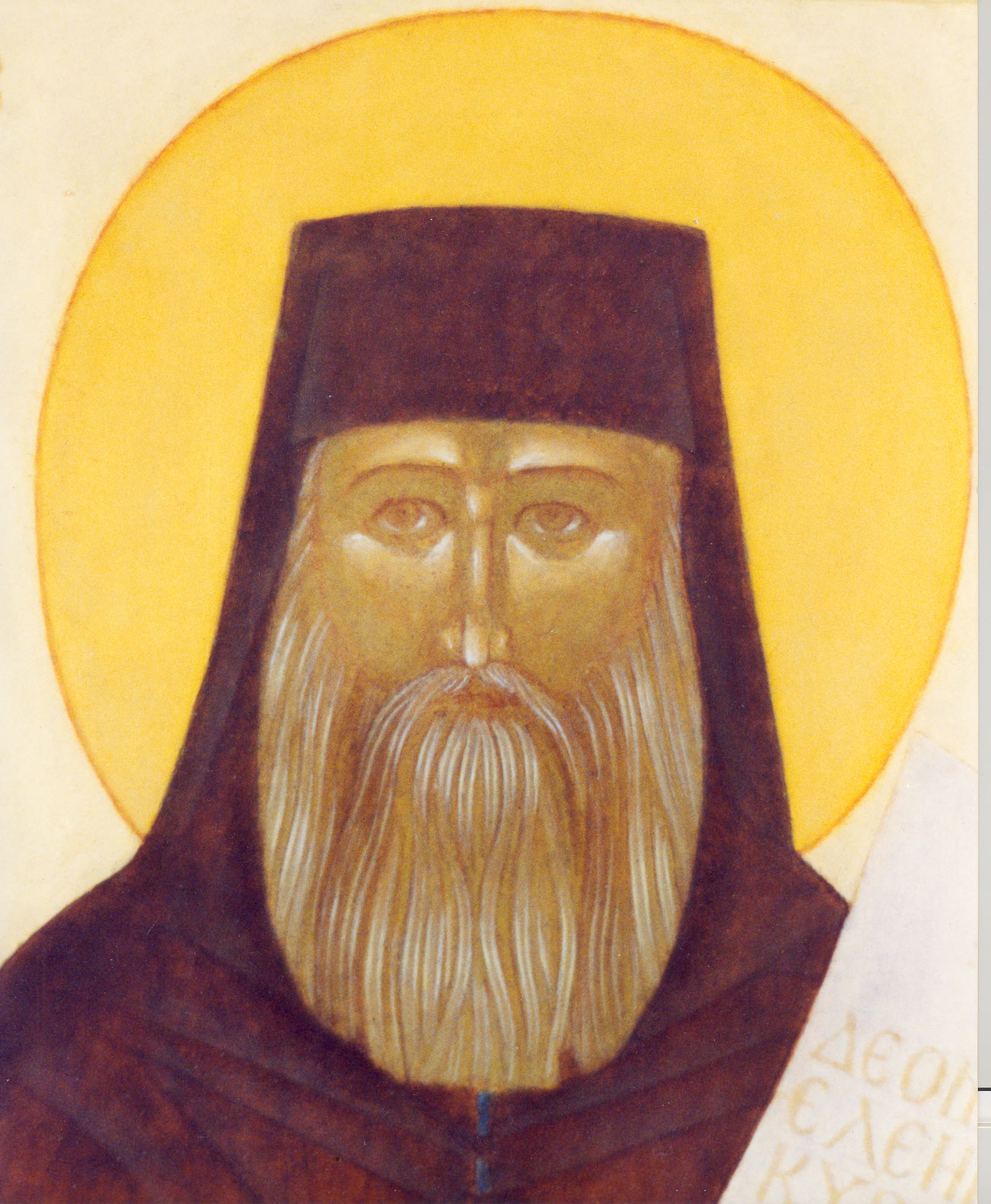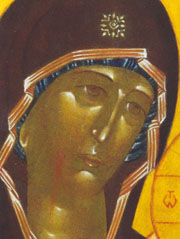|
home page |
background |
contact |
copyright |
theology of icons |
history of icons | icons a | icons b | icons c | icons d
|
Theology of The Icon
|
|
 |
The icon is a window onto the heavenly world. It can be an image of Christ, The Mother of God, the saints or the feasts of The Church. It depicts the holy transfigured aspect of each saint and their love of God. It is harmonious, full of beauty, stillness and peace. The features of those depicted concentrate on the divine. The eyes are large and looking towards God. The nose is narrow and refined, the mouth small. The ears are listening to God’s word and appear different to natural ears. All the senses have been purified and all attention is on the heavenly. The right hand blesses. In the left hand Christ and sanctified bishops hold a book of Holy Scripture. Other saints hold a text of their teaching. The Mother of God holds the Infant Christ. The background of the icon depicts the heavenly light. It can be ivory, pale ochre, pale green, gold or fiery red which is understood as a colour of great holiness. The perspective of the icon tends to be partially or completely inverted, directing ones senses to the heavenly realm. It converges on the viewer, so that the gaze is drawn within the image . The eyes of Christ, The Mother of God or the saints meet the eyes (and the heart) of the beholder, and through veneration the icon becomes a vessel of prayer. |
|
Christ Pantocrator |
|
Everything is depicted in its transfigured spiritual dimension. For instance buildings can be seen from above, below, right and left at the same time, as in the description of heavenly Jerusalem. Mountains and trees are seen inclining towards the holy ones depicted, as if this were their natural movement in the other
world. There are no shadows in the icon, the figures themselves radiate light from within, depicting their glory.
Colours also have their own symbolism. For instance, Christ wears blue which is a heavenly colour and wine-brown for his humanity. Martyrs often wear a red mantle over their normal clothing as red is the colour of martyrdom. Monks and nuns wear brown, the colour of the earth, symbolising their humility.
Figures are shown as tall, slender and full of grace. They incline towards God, not bending in a servile way, but showing that they chose to live a holy life, in freedom and love. |
|
 |
|
detail of Saint Silouan |
|
 . . |
The way that colour and light are depicted in an icon often varies according to the country. Russian icons have a different hue and luminosity to Greek icons, the northern light being much paler than the bright heat of Greece. This is shown in the different degree of light and shade on garments and faces also sometimes in the transparency of the icon.
In ancient icons the colours belonged very much to the area where they were painted. Colours reflected the local landscape from where they came, so that the church within was a spiritual expression of what was earthly outside. This is wonderfully illustrated at Ferapontov Monastery in northern Russia. It is completely covered with frescoes within, painted by Dionysii and his sons, using local ochres, greens and blues.
But all icons are similar in depicting holiness. They are a melody of calm and uninterrupted lines, an essential simplicity of harmony and peace where one's attention is concentrated in the timeless dimension of eternity.
In the orthodox home the icons are gathered together in one place, a corner of the main room, where an oil lamp is lit. This is called ‘The Beautiful Corner’ and here the family gathers for prayer together. |
| Detail: The Mother of God of Iverskaya |
| |
|


